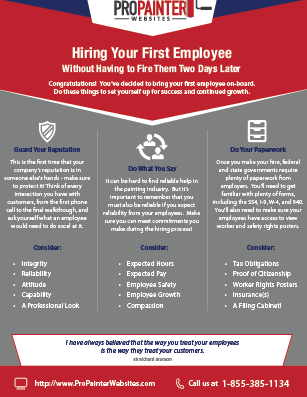Explore The Impact Of Seasonal Elements On The Efficiency Of Industrial External Paint And Determine The Optimum Times To Attain Enduring Outcomes For Your Task
Explore The Impact Of Seasonal Elements On The Efficiency Of Industrial External Paint And Determine The Optimum Times To Attain Enduring Outcomes For Your Task
Blog Article
Written By-Burnham Celik
When you're intending a business outside painting task, seasonal variables can make or break your results. You'll want to consider how temperature level and humidity influence paint application and drying times. Picking the right period can guarantee your paint adheres correctly and lasts much longer. But which seasons are genuinely the most effective for this sort of work? Let's discover the crucial elements that can influence your project's success.
The Influence of Temperature on Paint Application
When you're intending a business exterior painting task, the temperature level can significantly impact how well the paint adheres and dries.
Preferably, you intend to paint when temperatures vary between 50 ° F and 85 ° F. If it's as well chilly, the paint may not heal properly, bring about problems like peeling or splitting.
On the flip side, if it's also warm, the paint can dry also promptly, stopping appropriate attachment and causing an uneven finish.
You need to additionally consider the time of day; morning or late afternoon supplies cooler temperature levels, which can be a lot more beneficial.
Constantly examine the maker's referrals for the particular paint you're making use of, as they frequently supply assistance on the optimal temperature level range for ideal results.
Moisture and Its Effect on Drying Times
Temperature level isn't the only environmental variable that affects your industrial external painting project; moisture plays a substantial duty as well. High moisture degrees can slow down drying times considerably, impacting the general quality of your paint task.
When the air is saturated with wetness, the paint takes longer to cure, which can bring about concerns like poor adhesion and a higher threat of mildew growth. If you're repainting on a particularly damp day, be gotten ready for prolonged wait times between layers.
It's essential to keep track of regional climate condition and strategy as necessary. Preferably, go for moisture degrees in between 40% and 70% for optimum drying out.
Keeping these factors in mind guarantees your job remains on track and supplies a long lasting finish.
Best Seasons for Commercial Outside Painting Projects
What's the most effective season for your business outside paint projects?
Spring and early fall are commonly your best bets. During interior house painting services near me , temperature levels are mild, and humidity levels are frequently lower, developing suitable conditions for paint application and drying out.
Prevent summer's intense heat, which can cause paint to dry as well promptly, leading to poor bond and coating. In a similar way, winter season's chilly temperatures can hinder proper drying and healing, running the risk of the long life of your paint work.
visit this link for days with temperature levels in between 50 ° F and 85 ° F for optimum outcomes. Bear in mind to inspect the neighborhood weather prediction for rain, as damp problems can wreck your task.
Planning around these factors ensures your paint job runs efficiently and lasts longer.
Final thought
Finally, preparing your commercial exterior painting projects around seasonal factors to consider can make a substantial difference in the end result. By organizing job throughout the suitable temperature levels and moisture degrees, you'll guarantee better bond and drying times. Bear in mind to watch on local weather prediction and choose the correct time of year-- spring and early autumn are your best bets. Taking these actions will help you attain a long lasting and professional coating that lasts.
